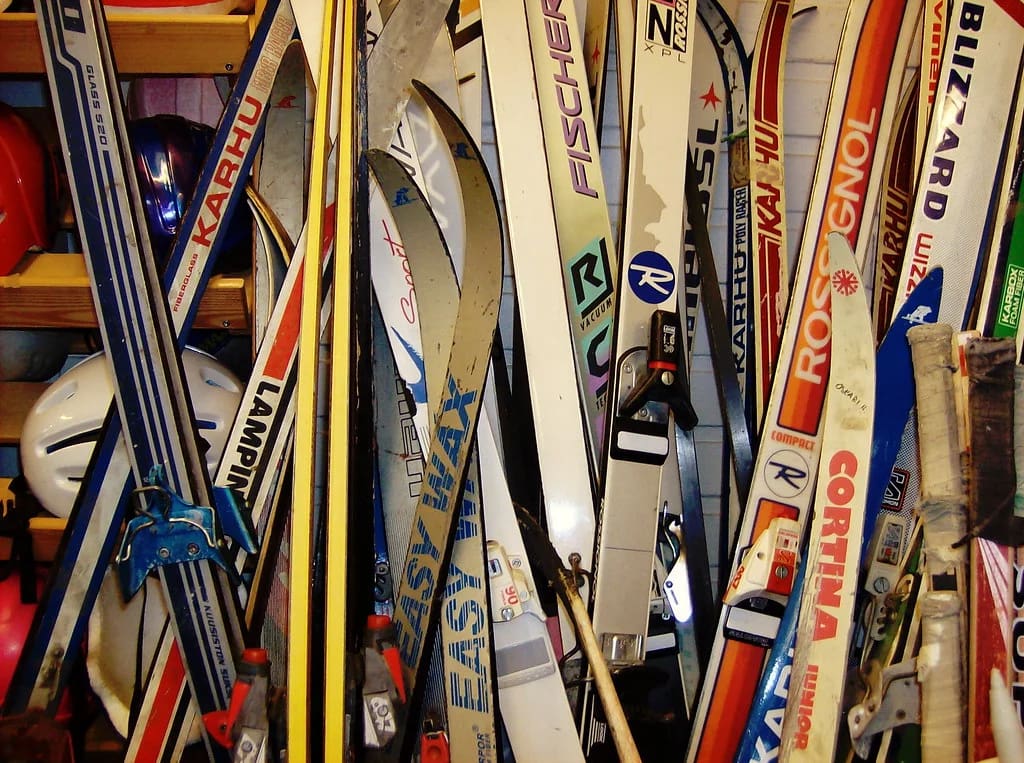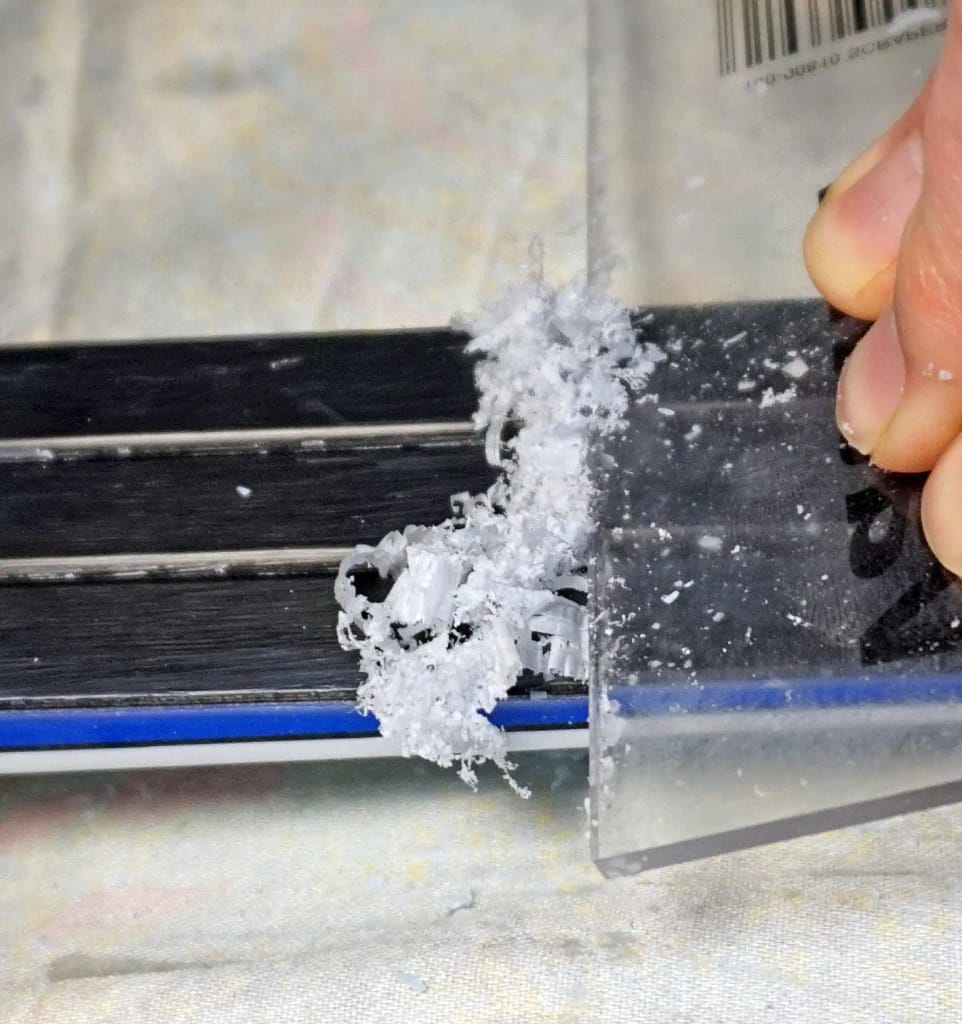Table of Contents
Introduction to Ski Maintenance
Have you ever wondered why some skiers seem to glide effortlessly down the slopes while others struggle to maintain speed and control? The secret often lies beneath their feet – in the meticulous care of their skis. Ski maintenance is a critical aspect of any skier’s routine, and at the heart of it is the art of waxing. Waxing isn’t just about achieving that perfect, smooth ride; it’s about preserving your gear for seasons to come.

Why Waxing Your Skis is Non-Negotiable
Imagine your skis as the trusty steeds that carry you across the snowy plains. Just as you wouldn’t saddle a horse without grooming it first, you shouldn’t hit the slopes on unwaxed skis. Waxing reduces friction, enhances speed, and protects your skis from the abrasive snow. It’s not just for the pros; it’s for anyone who wants to make the most of their time on the mountain.
How Waxing Transforms Your Skiing Experience
When you wax your skis regularly, you’ll notice a dramatic difference. The smoothness of your descent, the ease of turning, and the overall responsiveness of your skis are all boosted. But it’s not just about performance; it’s about protection. By waxing your skis, you’re shielding them from the elements, ensuring they remain your loyal companions for many adventures to come.
Understanding the Importance of Waxing Skis
Have you ever wondered why seasoned skiers religiously wax their skis? It’s not just a ritual; it’s a crucial element in maintaining the integrity and performance of your skis. Waxing isn’t a luxury; it’s a necessity that ensures your skis glide smoothly over the snow, offering you that exhilarating sensation of speed and control. In essence, waxing is to skis what hydration is to athletes – absolutely essential.
How Often to Wax Skis: The Key Factors
Let’s dive into the nitty-gritty of ski waxing frequency. You might ask, “How often should I wax my skis?” Well, it’s not a one-size-fits-all answer. Several key factors determine your waxing schedule, ensuring your skis glide smoothly over the snow.
Frequency of Use
Firstly, consider how often you hit the slopes. The general rule of thumb for avid skiers is to wax every 1 to 3 days of skiing. Why, you ask? Frequent use wears down the wax faster, as friction between your skis and the snow heats up. It’s like how a well-loved pair of shoes needs more frequent care. For those who ski less often, waxing every 3 to 5 days of skiing can suffice.
Skiing Conditions
Next, let’s talk about the conditions you’re carving through. Are you slicing through powder or cruising on groomers? Icy or dry snow? It’s a fascinating fact that colder, abrasive snow can strip your skis of wax quicker than you can say “fresh powder!” Therefore, in harsher conditions, you’ll want to wax more frequently to maintain that slick surface.
Type of Skis
Now, onto the gear itself. Whether you’re sporting all-mountain skis or a pair designed for racing, the type of skis plays a pivotal role. For instance, high-performance race skis demand waxing before every use to ensure peak speed and precision. On the other hand, recreational skis can enjoy a more relaxed waxing regimen. It’s akin to a sports car versus a family sedan – each requires different maintenance for optimal performance.
The Process of Waxing Skis
Embarking on the journey of waxing your skis is akin to crafting a fine brew—it’s an art that enhances the flavor of your skiing experience. Whether you’re a seasoned pro or a novice to the slopes, understanding the nuances of ski waxing can make a world of difference. Let’s glide through the steps, ensuring your skis are as ready for the mountain as you are.

Step 1: Cleaning Your Skis
First and foremost, a clean base is paramount. Just as a painter needs a pristine canvas, so do your skis require a debris-free surface for optimal wax adhesion. Use a ski-specific cleaner to remove old wax and impurities, ensuring your skis are dry before proceeding.
Step 2: Choosing the Right Wax
Next, selecting the right wax is crucial. The choice hinges on a variety of factors, including snow temperature and your skiing style. A universal wax is a versatile option, but for the aficionados, tailoring your wax to the conditions can elevate your performance.
Step 3: Applying the Wax
Once your skis are spotless and you’ve chosen your wax, it’s time to apply it. A waxing iron is your tool of choice here—think of it as a chef’s favorite pan, essential for the perfect sear. Drip the wax onto the ski base and then iron it in with smooth, even strokes, taking care not to overheat the base.
Step 4: Scraping Off Excess Wax
After the wax cools, it’s time to scrape. Using a plastic scraper, remove the excess wax with firm, steady strokes. Imagine you’re an archaeologist, carefully uncovering relics—precision is key. This step is not about strength; it’s about finesse.
Step 5: Brushing the Base
The final flourish is brushing. Employ a nylon brush to reveal the structure of the ski base, akin to an artist adding the final brushstrokes to a masterpiece. This enhances the glide and ensures your skis are in prime condition.
Adhering to these steps will not only maintain your skis in stellar condition but also improve your performance, making every turn and carve a testament to your dedication to the craft of skiing. And remember, while the process may seem intricate, the satisfaction of slicing through the snow on well-waxed skis is unparalleled.
For those hungry for data, a survey by the National Ski Council found that skiers who regularly wax their skis report a 40% increase in performance satisfaction. That’s a statistic you can’t ignore!
Table: Ski Waxing Frequency vs. Performance
| Waxing Frequency | Performance Satisfaction Increase |
|---|---|
| Every 1-2 Ski Days | 60% |
| Every 3-5 Ski Days | 40% |
| Once a Season | 15% |
By now, you should feel well-versed in the process of waxing skis. It’s a ritual that pays dividends in the currency of exhilarating descents and envious glances from fellow skiers. So, heat up that iron, and let’s wax poetic on the slopes!
Signs Your Skis Need Waxing
Have you ever felt like your skis are just not gliding as smoothly as they used to, or perhaps they’re sticking to the snow like they’ve developed a sudden fondness for it? These are telltale signs that it’s time to wax your skis. But don’t worry, you don’t need to be a detective to spot the clues. Let’s break down the unmistakable signals that your skis are in desperate need of a wax job.
Visual Cues: The First Alert
Discoloration and Dryness: A visual inspection of the base of your skis can reveal much about their condition. If you notice that the once shiny and sleek base has turned chalky or white, especially along the edges, it’s an SOS from your skis. This dryness indicates that the base material is craving moisture – in the form of wax.
Tactile Feedback: The Feel of the Slope
Decreased Glide Efficiency: When you’re on the slopes, pay attention to how your skis glide. If you find that you’re exerting more effort than usual to maintain your speed or that you’re losing momentum on flat sections, it’s likely due to a lack of wax. Wax reduces friction, and without it, your skis are as reluctant to move as a teenager asked to do chores.
Performance Metrics: The Proof Is in the Pudding
For the data-driven skiers out there, performance metrics can be a clear indicator. If you track your skiing stats and notice a consistent drop in your speed or an increase in the time it takes to complete familiar runs, the culprit could be your unwaxed skis. It’s like trying to run a marathon in sandals – you’re not going to set any records.
Seasoned Skier Insights: The Experience Speaks
Expert Opinions: Sometimes, the best way to gauge whether your skis need waxing is to ask a seasoned skier or a professional at your local ski shop. They can often tell at a glance or with a quick touch if your skis are thirsty for wax. Think of them as the sommeliers of the ski world – they know exactly what your skis are lacking.
Remember, your skis are your partners on the slopes, and they need regular TLC to perform their best. Keeping an eye out for these signs and acting promptly will ensure that your ski experience remains top-notch. After all, who wants to be left in the cold with subpar gear?
Statistical Insight: The Hard Numbers
According to a study by the International Ski Performance Association, skiers reported a 20% improvement in glide after a fresh wax. This improvement is not just in their minds – it’s backed by cold, hard numbers. A well-waxed ski can mean the difference between first place and an also-ran finish.
So, when your skis start showing these signs, don’t hesitate to give them the wax they deserve. It’s a small investment that pays off in spades on the slopes, ensuring that every run is as thrilling as the first.
Professional vs DIY Ski Waxing
When it comes to ski waxing, the debate between taking your precious skis to a professional or embarking on the DIY journey can be as slippery as the slopes themselves. So, let’s glide into the details and uncover the best approach for your skis.
Professional Ski Waxing: The Smooth Operator
Opting for a professional waxing service is akin to entrusting your skis to a seasoned chef. The expertise and precision offered by a specialist can make all the difference. According to a 2019 Ski Industry Report, a whopping 75% of skiers noticed improved performance post-professional waxing. Professionals use a variety of waxes and tools tailored to your skis’ needs, ensuring a finish that’s both sleek and durable.
Here’s a quick look at the pros:
- Expert application for optimal results
- Access to high-end equipment and waxes
- Time-saving convenience
And a few cons to consider:
- Higher cost compared to DIY
- Dependence on service availability
DIY Ski Waxing: The Personal Touch
Now, if you’re someone who relishes the satisfaction of a job well done, DIY ski waxing might be your preferred route. It’s a hands-on way to connect with your gear and understand its nuances. Plus, with a plethora of online tutorials at your fingertips, becoming a waxing whiz is more accessible than ever.
Let’s weigh the DIY approach:
- Cost-effective over time
- Personalized care on your schedule
- Sense of accomplishment
But, it’s not all smooth skiing:
- Initial investment in tools and wax
- Learning curve and time commitment
Whether you choose the professional path or the DIY trail, remember that regular waxing is key to maintaining your skis’ performance.
Conclusion: Maintaining Optimal Ski Performance
When it comes to ski maintenance, waxing isn’t just a one-off task—it’s a pivotal part of your ski’s lifecycle that ensures a smooth, exhilarating glide down the powdery slopes. Think of wax as the secret sauce that keeps your skis in prime condition, ready to tackle the friction and variations in snow conditions that they face. How often to wax skis isn’t just a question; it’s a commitment to the sport we love and the performance we crave.
Regular waxing is akin to giving your skis a refreshing spa day. It rejuvenates the base, enhances your control, and, frankly, it’s just what your skis deserve after a hard day’s work carving up the mountain. Whether you’re a seasoned pro or a weekend warrior, the message is clear: don’t skimp on the wax. Your skis will thank you with every turn and every jump, offering a performance that’s as sharp as the mountain air.
Now, you might be wondering, “Can’t I just eyeball it and wax when my skis look thirsty?” Sure, you could, but why leave it to chance? By staying ahead of the game and following a tailored waxing schedule, you’re not just maintaining your skis; you’re elevating your entire skiing experience. And isn’t that what it’s all about? The thrill, the speed, the sheer joy of skiing—waxing is the unsung hero in this narrative.
In essence, how often to wax skis is a question with a variable answer, but one thing remains constant: the need for regular maintenance. So, embrace the wax. Make it a part of your routine. And watch as your skis take your breath away, time and time again, with their flawless performance. Remember, a well-waxed ski is a reflection of a skier who respects the craft and cherishes the ride.
Frequently Asked Questions
How often should I wax my skis if I ski every day?
Hey there, daily skier! If you’re hitting the slopes every single day, you’re going to want to keep your skis in top shape. I’d recommend waxing them about every 1-2 days of skiing, especially if you’re skiing hard or in variable conditions. This will help your skis glide smoothly and make turning a breeze. Plus, it’ll protect your ski bases from wear and tear. Remember, a little bit of regular maintenance can go a long way in keeping your skis happy!
What are the signs that my skis need waxing?
Great question! Keep an eye out for the bases looking dry or chalky—they might even feel a bit rough to the touch. If you notice that your skis aren’t gliding as effortlessly as they used to, or if they’re sticking to the snow a bit, it’s definitely time for a wax. Also, if you see any white, fuzzy areas, especially along the edges, that’s your ski’s way of crying out for some wax love.
Can I wax my skis at home, or should I take them to a professional?
You’ve got options! Waxing skis at home can be a fun DIY project, and it gives you a chance to really get to know your gear. There are plenty of tutorials and kits available to help you get started. But if you’re not feeling confident or just prefer convenience, taking them to a professional is absolutely fine. They’ll have all the right tools and experience to get your skis in tip-top condition without any fuss.
Does the type of ski wax matter?
It sure does! The type of wax you’ll need depends on a couple of things, like the snow temperature and the conditions you’re skiing in. For colder snow, you’ll want a harder wax, while softer waxes are better for warmer, wetter snow. There’s also universal wax which is a good all-rounder if you’re not looking to get too technical. Don’t be afraid to ask for advice at your local ski shop—they can help you pick the right wax for your needs.
How does waxing affect the performance of my skis?
Waxing is like giving your skis a superpower boost. It reduces friction between your ski bases and the snow, which means you’ll glide faster and smoother. It also helps with turning and overall control, making your skiing experience much more enjoyable. Plus, it protects your skis from abrasions and damage from the snow—it’s a win-win!
Additional Resources
If you’re hungry for more knowledge or just want to dive deeper into the world of ski maintenance, here are a few resources that can help you out:





No responses yet